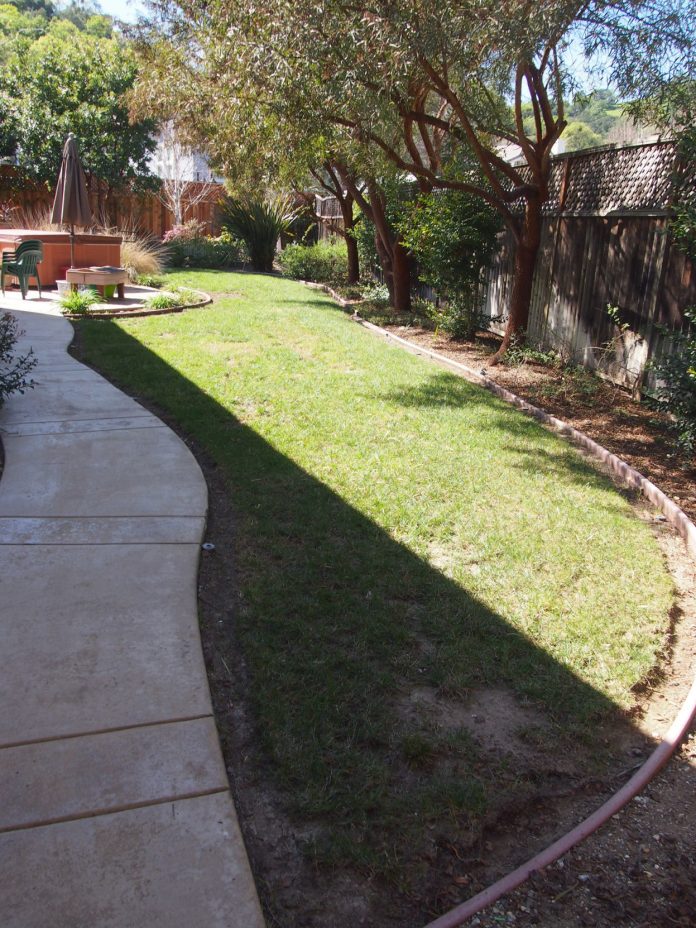
Is the grass greener on the other side? It shouldn’t be with the water restrictions we have all been given. Now well into summer, we have visual proof of what a serious California drought looks like in our own yards and neighborhoods. This is a hot topic. The Santa Clara Valley Water District reports that many homeowners are taking advantage of the rebate program to replace their lawns. I have heard the pros and mostly cons of replacing lawn with artificial turf. Recently, I saw a video of a company that uses a plant-based green dye to temporarily color your lawn until the rains come down, wash it away and bring back that luscious green we all dream about.
The rain will hopefully come, and our green lawns may return. But living with water shortages in California is a lifestyle we should adapt to. One lifestyle change my household has happily acknowledged is that with minimal watering, our lawns don’t require the weekly ritual of mowing, edging and blowing. I had three small lawns, and this spring took the opportunity to replace one through the SCVWD Rebate Program. That unhappy lawn has been replaced with a carefree landscape filled with native and drought-tolerant plants and groundcovers. The area now thrives with a diversity of plant color and texture, bees, butterflies, hummingbirds and other delights. The joy, easy care and water savings it has brought has me reevaluating any reasoning for keeping my other two lawns.
This is the perfect time to convert your lawn to a landscape that will both thrive in our drought years and be beneficial to our environment. Why? Because one of the best times to plant native and water-wise plants is in the fall, which is right around the corner. To begin, simply stop watering your lawn now and use this time before fall planting to make a few decisions and do some research.
Will you “lose the lawn” yourself, and what is the best approach for doing that? Or will you hire a landscaping company? Will you take advantage of the SCVWD Rebate Program before the Dec. 31 deadline? Browse websites for landscape ideas and all the wonderful drought-tolerant and native ground covers, perennials, shrubs and trees available. Know the mature size of your plant choices. Many will grow slowly and in time fill in and be long lived. Will you use hardscape or garden art to compliment your design?
If putting in a pathway or patio, please consider using a permeable solution, such as pavers or flagstone set into the ground, so water drainage can penetrate. A good 2-4 inches of mulch is needed to prevent evaporation around your new plants. Wood chips, bark or even small rocks are good choices. Consider that a drought-wise lawn conversion usually includes converting your sprinkler system to a drip irrigation system. Your new garden will need water for the first year or two, but it will need very little after it is established.
The grass may not be greener on your side of the fence, but it can be replaced with plants and materials that are even more attractive, water-wise and environmentally smart and easier on your time budget.
Pam Underwood is a Santa Clara County Master Gardener. Call their hotline (408) 282-3105 from 9:30 a.m. to 12:30 p.m. Monday through Friday.









